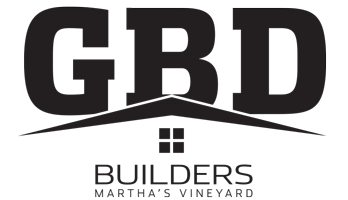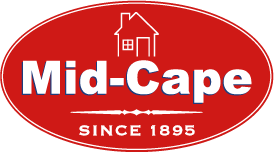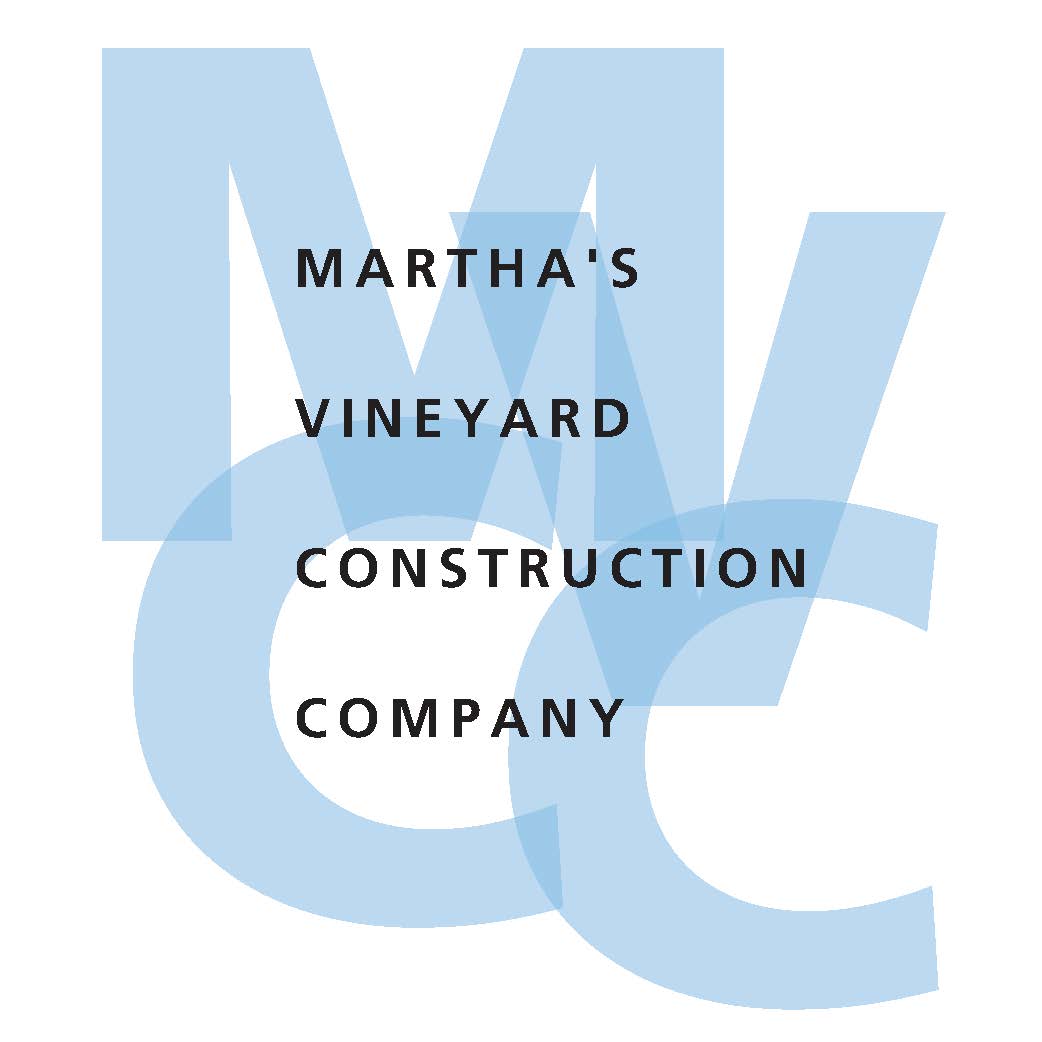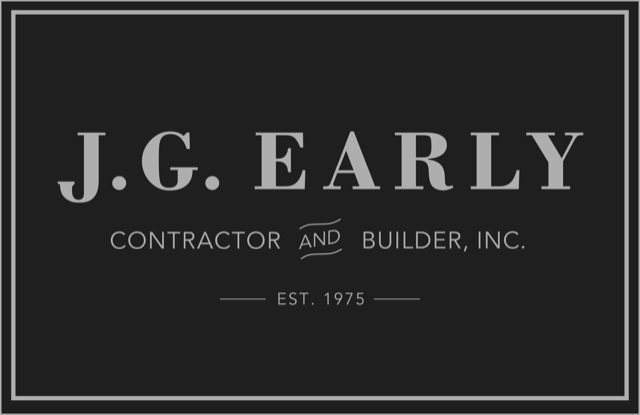Commonwealth of Massachusetts Division of Occupational Licensure Office of Public Safety and Inspections Board of Building Regulations and Standards Update Regarding the In-Class Continuing Education Requirement for Construction Supervisor Renewals |
On April 14, 2020, in response to the COVID-19 emergency, the Board of Building Regulations and Standards (BBRS) suspended the requirement that licensees may only utilize up to six (6) hours of online continuing education towards their renewal requirement for all renewals received by the Division of Occupational Licensure (formerly Division of Professional Licensure). This suspension applies to all renewals received up to ninety (90) days after the end of the State of Emergency. Because the COVID-19 State of Emergency was terminated June 15, 202l, licensees renewing their CSL after September 13, 2021, will again require in-person classroom training hours as prescribed in 780 CMR 110.RS.4.3 Education Topics. This means a maximum of six hours taken via on-line classes may be utilized for renewal requirements for any renewal received after September 13, 2021. In addition, live webinars will not be accepted as a substitute for in-person continuing education hours after September 13, 2021. All licenses that expire in 2021 are currently eligible for renewal. The Division must receive your complete renewal, including continuing education certificates on or before September 13, 2021. Construction Supervisor licenses can renew online at here. As a reminder, all courses used to satisfy the continuing education requirement must be taken from an approved school. In summary:
|
SUPPORT 100% RENEWABLE ENERGY FOR MARTHA'S VINEYARD
Please come vote for the 100% Renewable Resolution at Town Meeting, Tuesday Oct 6, 4:00 at the Tabernacle in Oak Bluffs!
This is a non-binding resolution that seeks to set a goal for us all to work towards— 100% Renewable MV by 2040. It is a first, big step we can take to help with climate change.
We are the first town to vote on it and it is important that it passes!


Please come to Town Meeting to insure that it passes. It won’t pass without people like you being there.
- Fluid Systems (Hydraulics)
- Offshore Safety & Survival
Ninth Edition Building Code
Amendments to the Energy Portions Effective Date.
The Board of Building Regulations and Standards (BBRS) has voted to amend the building code 9th by adopting the 2018 International Energy Conservation Code (IECC) with Massachusetts amendments. The Secretary of State has assigned February 7, 2020, as the effective date. A version of the amendments is available on the Office of Public Safety and Inspections webpage:
https://www.mass.gov/handbook/ninth-edition-of-the-ma-state-building-code-780
The amendments can be viewed
Ninth Edition Base Code – Chapter 13
Stretch Energy Code - Appendix AA
Ninth Edition Residential Code – Chapter 11
In updating the 9th edition energy code, the BBRS actions included granting time to adjust to the updated code. For this reason, the BBRS voted that building permit applicants can elect to utilize the energy code provision in the 2015 IECC along with the Massachusetts amendments until August 7, 2020, at which time this option will conclude.
Daniel P. Walsh
Office of Public Safety & Inspections
Assistant Chief of Inspections – Building and Engineering
1000 Washington Street
Boston, MA 02118
617-826-5236
Andrew Flake receives lifetime achievement award
Building association recognizes its founding board president.
By Geoff Currier, January 29, 2020
 Andrew Flake, left, receives his award from Newell Isbell Shinn, right. — Lexi Pline.
Andrew Flake, left, receives his award from Newell Isbell Shinn, right. — Lexi Pline.
About 30 years ago, Andrew Flake had breakfast at the Black Dog with fellow builders Colin Whyte and John Early, and tossed out the idea of getting together with other builders, architects, and engineers for a two-day meeting to share ideas on the business and, according to Flake, “Everyone looked at me like I had horns on my head and a tail coming out the rear.”
It was an idea that was ahead of its time, but then, seven years ago, in an after-hours meeting at R.D. Crane (now Crane Appliance) in Vineyard Haven, Flake, along with some other people in the Vineyard construction business, joined with a representative from the Cape Cod Builders Association (CCBA) to try and figure out how the Vineyard could have a similar association on the Island.
“In the beginning, the Cape Cod Builders Association partnered with us,” Flake told the Times. He told the CCBA that the Islanders would learn everything they can from it, but in the end, they wanted to be an independent organization. “It took a while to gain traction,” Flake said, “but the underlying reasons for doing this were so good, not just for builders and designers, but for the community at large, that over time we became a very worthy organization.” That was the beginning of the Martha’s Vineyard Builders Association (MVBA), and Andrew Flake was the founding board president.
Flake served as president for five years, and turned over the reins to Newell Isbell Shinn two years ago. Now, after seven years on the MVBA board, Flake has decided to step down, and last Thursday evening, close to 150 MVBA members surprised Flake at their monthly meeting at the Loft in Oak Bluffs, presenting him with a Distinguished Service Award, a bowl from the Martha’s Vineyard Glassworks.
Newell Isbell Shinn presented Flake with the award, saying, “Andrew has shown incredible dedication to this organization, he’s shown a commitment to excellence and has been an inspiration to all of us, and we would not be where we are today without Andrew.”
Shinn read a letter sent by John Abrams, CEO of South Mountain Co., who was unable to be at the meeting. Flake “deserves this award,” it read; “he’s been a steady and stellar influence, and his passion and dedication have been an important part of the growth and maturity of the organization.”
From its origins at the meeting at Crane seven years ago, the MVBA has grown to more than 140 members, including a variety of groups such as general contractors, painters, masons, insurance professionals, and more. MVBA gives an informed voice to a large part of our economy — the Island’s construction labor force.
The MVBA deals with environmental issues and zoning issues, and has a particular interest in getting people involved in the trades. It works with ACE MV to provide continuing education for programs in the building trades, and with MVYouth to encourage MVRHS students to build a career in the trades. In the back of the room at the Loft where the meeting was being held were a series of large, mounted posters that the MVBA helped MVYouth produce, featuring successful local tradespeople who had graduated from MVRHS. They are hung in the high school, giving students something to aspire to. MVBA will disburse $5,000 in scholarships in 2020; $1,000 of that $5,000 is earmarked for MVYouth.
Richard Leonard, regional president of Cape Cod Five, a co-sponsor of the evening’s event along with Crane Appliances, said the building industry is a big part of the Island economy. Having them work together helps facilitate good outcomes when difficult problems arise: “We’re really pleased and proud to be a member and provide support.”
Upon receiving the award, Flake reflected, “I couldn’t imagine that 30 years after that initial meeting at the Black Dog that I’d be standing up here and looking back on all that we’ve accomplished. It’s a great feeling.”
EDGARTOWN ELEVATES READE MILNE TO BUILDING INSPECTOR
9/29/2020 The Vineyard Gazette - Martha's Vineyard News |Melissa Knowles
Reade Milne sat at her desk in the Edgartown building inspector’s office on Tuesday, looking out over three decades of clutter — shelves of leather-bound zoning ledgers, piles of land records, a magic eight-ball, a stuffed pheasant.
The clutter belonged to Leonard Jason Jr., who after 34 years has stepped down from his position as Edgartown’s building inspector, passing on the office, in all of its messy glory, to Ms. Milne.
“I’m still working on clearing it out,” she said. “After that many years, there’s a lot to go through.”
After three years as assistant building inspector, Ms. Milne was officially appointed on Dec. 13 as the Edgartown building inspector. She is the first woman to hold the position. But, as she explained, “It doesn’t seem like anything monumental. I’ve been
doing what is considered a man’s work since I was 18 years old.”
Ms. Milne grew up on the Vineyard and has experience in almost every facet of the construction industry, from banging nails to architectural planning. She began her decade-long stint in construction working for her father, Geoff Kontje and his company 41 Degrees North Construction, after deciding not to return to her second semester at St. Michael’s College.
“I didn’t really know what I wanted then, but he showed me the ropes, from framing through finish, and eventually he put me on my own job as foreman,” she said. “He was always pushing me to learn more about different aspects of what goes into building a house.”
After years of running a construction crew for her father, she decided to change pace by enrolling in Boston Architectural College. While in school she was awarded a youth lot in Vineyard Haven. She spent her first year at school designing her own house and took the following year off to build it, using reclaimed post and beams and plenty of support from family and friends.
Among the many helpers was Greg Milne, a fellow graduate student she had just met that year. Mr. Milne would soon become her husband — and is currently a registered architect at South Mountain Company.
The two returned to Boston the following year, got engaged soon after, and Ms. Milne continued to attend college while working for an architecture firm. But once they had their first child, Greta, they decided it was time to move back to the Island. The couple also has a son, Felix.
After returning to the Island, Ms. Milne continued to work in both construction and architecture for many years before becoming the assistant building inspector.
“I was sort of half joking that I was interested in the position and then I got roped into it,” she recalled. “I made an offhand comment to somebody that I was thinking about doing it. And, being the Vineyard, word got through to Lenny.”
She continued: “Lenny said, I think you should do it. He said it’s nothing big. You follow the code and you know the code. He said you have a good head on your shoulders. You’ll do a good job.”
That was three years ago, and in that time she has absorbed all the information she
9/29/2020 The Vineyard Gazette - Martha's Vineyard News | Edgartown Elevates Reade Milne To Building Inspector
From banging nails to architectural planning, Ms. Milne has worked in many facets of the construction business.
“I paid attention to everything he said because he doesn’t say much,” she said. “So I just did my best to observe. The way he inspected the house, the way he wrote a permit or the subtle relationship of approaching a situation that could be contentious.”
Ms. Milne said she is honored to be filling Mr. Jason’s shoes, and has already set out on a busy first week inspecting many houses In Edgartown and Chappaquiddick, meeting with real estate agents and members of the planning board.
“I’m still trying to find time to make myself space in here,” she said, kicking her feet up on an open filing cabinet. “But the pheasant is our new mascot . . . his name is Lenny, and I think he is going to stay.”
HELP "BIODIVERSITY WORKS"
LOCATE HIBERNATING BATS ON THE VINEYARD

BiodiversityWorks - The Island wildlife conservation organization is hoping to hear from island builders if they come across bat activity in basements, crawl spaces or attics. BiodiversityWorks is doing wonderful work learning about and monitoring our bats, and engaging the community in the process.
How Will Construction Solve Its
Skilled Labor Crisis?
Technology will no doubt be part of the solution, but we have a much deeper, older problem to solve first
A severe shortage of skilled labor in construction has been ramping up for a decade now, but as an industry, we seem to be just as far from solving it as we were when it started. The National Association of Home Builders (NAHB) characterized the shortage this way:
“More than four out of five builders expect to face serious challenges regarding the cost and availability of labor in 2019 … Just 13% of builders cited labor issues as an important concern in 2011, with the rate steadily rising over the ensuing years and peaking at 82% in each of the last three years (2017–2019).” [NAHBNow]
 At the founding of the U.S., working in the building trades did did not carry the same social stigma that today tends to scare away many younger people from pursuing a career in the trades. Quite the opposite: The ethos of our industry is defined by the Carpenters' Company , the oldest trade guild in the U.S., which held their first meetings in Carpenter's Hall in Philadelphia (shown above). Designed by Robert Smith, a prominent member of the guild, and sited a few hundred feet from Benjamin Franklin's home, Carpenter's Hall, and its namesake, sat at the very heart of government and industry. The building served as the site of the first Continental Congress, and as the First and Second Banks of the United States, and the members of the Carpenters' Company who erected it also designed and built Independence Hall. In short, carpenter's held preeminent status in the social fabric of our fledgling nation. (elevation drawing: Historic American Buildings Survey)
At the founding of the U.S., working in the building trades did did not carry the same social stigma that today tends to scare away many younger people from pursuing a career in the trades. Quite the opposite: The ethos of our industry is defined by the Carpenters' Company , the oldest trade guild in the U.S., which held their first meetings in Carpenter's Hall in Philadelphia (shown above). Designed by Robert Smith, a prominent member of the guild, and sited a few hundred feet from Benjamin Franklin's home, Carpenter's Hall, and its namesake, sat at the very heart of government and industry. The building served as the site of the first Continental Congress, and as the First and Second Banks of the United States, and the members of the Carpenters' Company who erected it also designed and built Independence Hall. In short, carpenter's held preeminent status in the social fabric of our fledgling nation. (elevation drawing: Historic American Buildings Survey)
The NAHB/Wells-Fargo Housing Index surveyed builders, reporting that 83% of builders are hindered by shortages of framing crews and rough carpenters, 78% by a lack of finish carpenters, and 70% to 73% by shortages of bricklayers, masons, and concrete workers. Nearly every trade is listed in the report—including all mechanical trades, interior finishing trades, even landscapers, excavators, and weatherization workers—with more than half of builders feeling hindered by not being able to fill these key positions.
Similar numbers are posted in the remodeling sector: The NAHB Remodeling Market Index reported that roughly 85% of remodelers reported shortages of workers available to perform finished or rough carpentry, and nearly half (48%) classified the shortage of finish carpenters as "serious."
The McKinsey Global Institute, a think-tank that has surveyed construction progress worldwide for decades, assesses the damage this way:
“Labor availability is the primary concern of homebuilders ... Due in part to a 70 percent decrease in new housing starts from 2009 to 2011, a large number of skilled workers left the industry. Demographic shifts, from an aging population to a lack of interest from young workers, are also reducing the pool of skilled workers. To compound the challenges, productivity growth in construction has been flat over the past 20 years, compared to 3.5 percent for the manufacturing sector and a global average of 2.8 percent.” [McKinsey&Co.]
In this article, I want to unpack those demographic shifts and focus, ultimately, on the root causes underlying the “lack of interest” from younger participants in the building trades. What never gets discussed in industry reports, but may prove to have the greatest impact on the lack of youth participation, is the issue of social class.
Young people today don’t want to align with outmoded, underserved, and culturally marginalized social groups. Put bluntly: young folks don’t want to be associated with what they perceive as low class work. Where the various sectors of the construction industry do align with positive media and technologically sophisticated challenges, young participants are showing a high degree of interest, even showing great innovation and leadership. In the article here, I want to frame the issues and point generally to some pathways that might lead in a positive direction. We will continue to build this out as an on-going thesis for leading change at JLConline.com and provide a range of positive examples over time. Here, the focus is on dampening myths and pointing to prospective solutions, however uncomfortable they might be to consider.
Is Technology a Solution?
The McKinsey group (among others) points more and more often to modular and off-site building solutions that lean on robotic and other highly technological processes as the answer that will take home building out of its slump. Following on the quote above, the McKinsey report continues:
 The homebuilding industry is not waiting around for the next generation of carpenters to come up to speed. Many companies are looking to "off-site solutions" - a.k.a. modular and panelized systems - as a way to reduce labor and increase productivity. Some companies, such as Entekra and Unity Homes (shown here) produce off-site framing systems that rival in performance any stick-built home. The only problem: Currently, only 3% of homes built in the U.S. are built using panelized or modular framing methods. We have a very long way to go, and an enormous lift in capital investment, before such technology solutions will make a significant dent in solving the skilled labor shortage. (Photo by Roe Osborn)
The homebuilding industry is not waiting around for the next generation of carpenters to come up to speed. Many companies are looking to "off-site solutions" - a.k.a. modular and panelized systems - as a way to reduce labor and increase productivity. Some companies, such as Entekra and Unity Homes (shown here) produce off-site framing systems that rival in performance any stick-built home. The only problem: Currently, only 3% of homes built in the U.S. are built using panelized or modular framing methods. We have a very long way to go, and an enormous lift in capital investment, before such technology solutions will make a significant dent in solving the skilled labor shortage. (Photo by Roe Osborn)
“These intersecting realities leave many companies no choice but to implement significant innovations (often digital) to their products and processes. One such innovation is off-site home building. An analysis of 14 leading modular (off-site) builders reveals more than $2 billion of disclosed funding in the market—not including investments by incumbents—led by private equity funds and large technology firms.”
To be clear, the “no choice” part of this boils down to this important fact: The home-building industry, the remodeling industry, even the global construction industry as a whole, is not standing by while the next generation of carpenters and masons is trained. While many in the residential sector remain nostalgic about what used to be, the world roars on. Yet, I think the industry think-tanks are over-optimistic about off-site building. Despite the seemingly massive funding going there, the numbers just aren’t there yet. Currently, only 3% of the houses built in the U.S. are produced using off-site methods. There are some intriguing examples of off-site framing techniques from companies like Entekra and Unity Homes (see “Factory Building: The Next Wave,” Feb/19). These companies show that off-site-framed homes can rival the best stick-built homes in quality and performance. Katerra is doing this for complete houses. But the capital investments needed to scale this production method for the entire nation far exceed the low-single-billion dollar investments disclosed. Simply put: We have a long, long way to go before off-site methods replace stick framing.
One point in the McKinsey report that may be underemphasized is this statement: “Incumbents are also starting to innovate: building-products manufacturers have created products that save on labor by combining process steps or lowering the skill level required to install appropriately, and distributors are experimenting with new digital selling tools for contractors.”
On the building materials side, our industry is no stranger to the trend towards component manufacturing, beginning with trusses, plywood, and window and door units. (Remember, there was a time at the beginning of the last century when joiners built doors and windows on site. We have come a long way from that, and the consolidation of steps and joining of systems will continue to bring efficiency to home building and remodeling.)
Building products continue to get more sophisticated, and this brings enormous impacts, both positive and negative, on labor and productivity. Those impacts have positively increased productivity: Standout examples include MiTek’s Sapphire system that has made truss and panelization quicker and easier to customize; Zip System sheathing that has zipped two processes and two passes around the exterior of buildings into one; andReady-Frame, which has essentially done for entire house frames what precut studs first did for walls. (For more on understanding the impacts of component manufacturing, see "The Future of Framing," Feb/18.)
But the impacts of material sophistication have also had a negative effect on productivity and raised the bar on the training demand. The number of “engineered” building components that require specific installation instructions defined by Evaluation Service Reports grows by the day, amplifying the need for a more astute, fast-thinking, problem-solving workforce. The technical sophistication of an increasing number of “engineered” products demands that installer-level workers need a broad understanding of the impacts that specialized systems can have on the overall build. But the education system designed to support the trades for the last century has been much more focused on increasing specialization—an ideal born out of manufacturing that is ill-suited to efficiency or quality on building sites.
How Did We Get Here?
The history of public education for the U.S. building trades traces its roots to a few key sources that I’ll touch on here. However much we have progressed as an industry, our legacy continues to define who we are, and not only has a bearing on how we got here, but also suggests steps in a path forward.
As with much of U.S. history, we have a historical “ethos” established in pre-Revolutionary America that has had a powerful, lingering effect on trade knowledge. History also delivered the Smith-Hughes Act—a Federal law passed in 1917 that forged our national outlook but doomed the performance of vocational education in America. Both deserve attention.
The ethos of home building was established by the Carpenters’ Company, the oldest trade guild in the U.S.—founded circa 1724 with ties to similar European guilds. Mark Luzio presented a lucid description of the business climate for GCs in the early period in America (see “The Carpenters’ Company,” Jan/17); it was a time of intense cooperation among builders and widespread public trust in the building professions, and created a strong basis for the transfer of knowledge though the trades from Europe to Colonial America that leaked into business practices during the westward expansion. In the new rural communities, the building trades flourished on practical ingenuity and self-taught knowledge. References like Asher Benjamin’s The Architect, or Practical House Carpenter(the professions were largely the same then) and The Farmer His Own Builder (we were an agricultural-dominated country in previous centuries) provided an important transfer of technical knowledge across the U.S.
 Library of CongressPhotos by Lewis Hine, including "Glassworks. Midnight." (shown here), drew attention to child labor in industry at the turn of the last century and set in motion radical education reforms. What often gets lost in the reaction to the unsafe and unhealthy working conditions for children, is the effective transfer of knowledge from one generation to the next. The active involvement of children working with their parents and relatives is what kept craft alive in the late 19th and early 20th centuries. (Library of Congress)
Library of CongressPhotos by Lewis Hine, including "Glassworks. Midnight." (shown here), drew attention to child labor in industry at the turn of the last century and set in motion radical education reforms. What often gets lost in the reaction to the unsafe and unhealthy working conditions for children, is the effective transfer of knowledge from one generation to the next. The active involvement of children working with their parents and relatives is what kept craft alive in the late 19th and early 20th centuries. (Library of Congress)
Fast forward to the early 1900s, when the sheer velocity of technological change created skilled labor shortages in almost every sector of the economy. Home building was disrupted by innovations in industrial lumber processing and early component manufacturing, but these disruptions paled in comparison with what was happening in retail product manufacturing. What once belonged to home craft—the making of clothes, home goods, farm implements, and tools—became the domain of start-up corporate enterprises using steam-driven technology at first, and then electricity, to create entirely new industries.
 Prior to the Smith-Hughes Act (which by the sheer magnitude of the dollars it poured into states for a segregated vocational system overpowered all early 20th-century educational reforms), there were other education movements that, while they didn't gain enough momentum to have a big effect on public education, nevertheless had a strong, albeit fleeting, influence on public opinion. One of the more interesting ones was the "manual training movement" which took off after Charles Ham published Mind And Hand: the Chief Factor in Education in 1886 (republished 1900 ). In this treatise, Ham defines the Ideal School (divided into various Laboratories for different trades) and argues that manual training is not only good for skill acquisition, but also builds the self-esteem of individuals that is needed for them to become better citizens.
Prior to the Smith-Hughes Act (which by the sheer magnitude of the dollars it poured into states for a segregated vocational system overpowered all early 20th-century educational reforms), there were other education movements that, while they didn't gain enough momentum to have a big effect on public education, nevertheless had a strong, albeit fleeting, influence on public opinion. One of the more interesting ones was the "manual training movement" which took off after Charles Ham published Mind And Hand: the Chief Factor in Education in 1886 (republished 1900 ). In this treatise, Ham defines the Ideal School (divided into various Laboratories for different trades) and argues that manual training is not only good for skill acquisition, but also builds the self-esteem of individuals that is needed for them to become better citizens.
The biggest disruption of all came from laws aimed at curbing child labor and keeping kids safe. It’s hard to argue with the need for these laws now, but the disruption on the transfer of practical knowledge was profound and often overlooked. Children were no longer taught skills and crafts by working alongside their parents. The solution was to reform public education, and the big change came in 1917 with passage of the Smith-Hughes Act—a bill that provided massive amounts of federal funding to states for vocational education and immediately set in motion programming at colleges and high schools across the U.S. It even allowed the development of vocationally focused Normal Schools in rural areas previously underserved by formal education.
John Hillison at Virgina Tech describes the political atmosphere that allowed passage of the Smith-Hughes Act as a “powerful coalition of unlikely allies ... with initially antagonistic perspectives.” This coalition included the National Education Association (NEA), the National Association of Manufacturers (NAM), The American Federation of Labor (AFL), US Chamber of Commerce, Farmers Union, National Grange, American Home Economics Association, and publications (which at the time, before radio or any other electronic media, were the forms of knowledge transfer with the widest distribution), including Wallace’s Farmer and Hoard’s Dairyman.
Unfortunately, the way the Smith-Hughes Act was written, it controlled the salaries of vocational teachers and set limits on what vocational instructors could teach. The intent was to prevent schools from raiding vocational funds to promote academic programs, but the effect led to tracking—educational programming that sorted students into either a college-prep track or a career-training (vocational) track.
The Smith-Hughes Act, which remained in place until 1963, required states to submit a plan to the Federal Board of Vocational Education. These "state plans" were really not written to reflect state priorities, but rather to prove adherence to the Federal procedures required under the law. Many states ended up setting up a separate Board of Vocational Education, outside the state Board of Education, just to ensure it wasn't locked out of receiving the Federal funds. But this meant management and oversight for vocational education was separated from the rest of the state's public education policy, and it's not surprising that vocational training has atrophied and is now often associated more with entitlement programs than with the state's strategic education goals.
Educational philosophers argued they were “fitting people to their probable destinies,” but in effect, these reformers perpetuated, and even grew, a huge class divide. Kids from poorer families who could not afford college tended to be shunted down the vocational track while kids from more elite families were prepped for college. This social divide, more than other pressure, remains an obstacle by limiting the social will to advance “mind and hand” educational solutions today.
 The Smith-Hughes Act of 1917 provided matching funds to states for vocational training set up in comprehensive high schools and rural Normal Schools. The law required a strict accounting on how states spent the funds.
The Smith-Hughes Act of 1917 provided matching funds to states for vocational training set up in comprehensive high schools and rural Normal Schools. The law required a strict accounting on how states spent the funds.
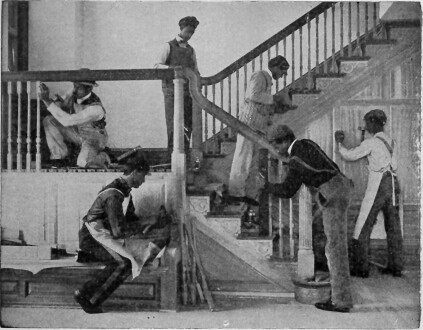 To meet the Federal guidelines, most states created separate boards to oversee vocational training programs, a system that stifled a unified education for all, and helped reinforce segregation by gender, class, and race.
To meet the Federal guidelines, most states created separate boards to oversee vocational training programs, a system that stifled a unified education for all, and helped reinforce segregation by gender, class, and race.
A List of Proposed Solutions
Politics is an issue we at JLC tend to avoid. We welcome the fact that we have readers from all facets of the political spectrum, and we don’t mean to support or alienate any one perspective. But on this topic, we are seeking a complete upheaval of public systems and a rewiring of the social consciousness, touching on topics that are political dynamite. Small, palatable gestures, such as fat scholarships to trade schools, or hashtags that foster goodwill, are not enough to move the needle on the change required for our industry. In reviewing the points below, I ask for your open mind. I have made every attempt to balance the options to entertain both public and private options. This is certainly not a problem the government alone can solve; any meaningful solution will require commitments from government, corporations, associations, individuals, and small businesses.
Top of the list is the pointed suggestion that companies that pay employees well and on time do not report much of a problem with skilled labor. If we want to create viable careers for young people in the trades, make jobs as lucrative as possible. These are not so much “dirty jobs” as they are lucrative and challenging, comparable to other top professions. The challenging part is not a problem for our industry, but making it lucrative for all involved is not often written into the business models of builders, developers, and contracting firms. But there are viable exceptions.
David Gerstel is an admirable example of someone who gained financial independence early in his career and ran what he coined an “employee-centered company”—not only paying higher than average wages but also instituting benefits like the four-day work week that allowed his carpenters to prosper as families and individuals in the community. This one shouldn’t be political. The labor demand for business owners certainly weighs heavily on the bottom line, but what is this work without labor? This one is solved by employers putting themselves in their employee’s shoes: What opportunities would you want? Why aren’t your employees or prospective hires where you are? Compassion and team building go hand in hand.
 Carpenter Aaron Butt (@aaronthomasaquinas) leads a stair-building workshop at Grand Banks Building Products in Gloucester, Mass.—one example of the new Chautauqua that, with the help of social media, is attracting young carpenters. (Photo: Monica Banks)
Carpenter Aaron Butt (@aaronthomasaquinas) leads a stair-building workshop at Grand Banks Building Products in Gloucester, Mass.—one example of the new Chautauqua that, with the help of social media, is attracting young carpenters. (Photo: Monica Banks)
Mind and hand. As a nation, we could be doing much more to support trades-inclusive public education. If we did, we would have much more bandwidth to entertain ways to integrate “mind and hand” solutions—integrated academic and technical programs. At the high-school level, technical instruction should not be a separate discipline. Instead, building-science, statics, and business administration should be academic electives, and most STEM courses could be combined with hands-on training that provides students with first-hand knowledge of tools for all industries.
Funding. By “support” for mind-and-hand curriculum, I mean not just a nod of approval but real dollars. The idea of a charter solution to overhauling public education is compelling, but evidence of large-scale progress is still forthcoming.
Traditionally, as a nation, we have supported education with taxation, and that is the political hot button we need to get clear about. Currently, corporate charter solutions for education are fraught with under-performance and corruption. Show the public results. Countries like Germany, Sweden, and Poland and other countries in Scandinavia and Europe do show results with apprenticeship programs in the building trades that are completely ingrained in the social fabric and public education systems, and the building professions in those countries tend to not have quite the same social stigma they do in the U.S. But if we as an industry continue to marvel at these apprenticeship programs, we need to be willing to provide the same level of public support for such programs.
 Rather than complain about or ignore vocational school graduates, Scott Burt and his business partner Todd Pudvar got involved at their local technical school teaching their own program, and have hired some of the graduates. (For more about this program, see "Future-Proofing the Workforce, JLC Feb/18; photo by Tim Healey.)
Rather than complain about or ignore vocational school graduates, Scott Burt and his business partner Todd Pudvar got involved at their local technical school teaching their own program, and have hired some of the graduates. (For more about this program, see "Future-Proofing the Workforce, JLC Feb/18; photo by Tim Healey.)
Or not. Show us something that performs as well without public funding. I am skeptical that can be done with a growth-oriented, for-profit educational model. But real change might come from corporate foundations. If Google.org or the Ford Foundation were to focus on trade education, or, better yet, join forces and solicit foundational help from Amazon, Apple, Berkshire-Hathaway, and others, there would be ample support for overhauling public education to include feasible “mind and hand” high-school and early college programming. As a society, we enjoy enormous generosity from our nation’s corporate leaders, evidenced by the likes of Bill and Melinda Gates, George Kaiser, Gordon Moore ... the list is long. So why hasn’t the goal of ensuring affordable, high-performance, healthy housing ranked just as high on the list of needs as any other health initiative? Maybe asking that question is a start.
Unions. If we look to apprenticeship programs from abroad for inspiration on effective educational methods, a tip of the hat is owed to the United Brotherhood of Carpenters. The Carpenters run one of the most sophisticated and effective network of training centers, including the Carpenters International Training Center in Las Vegas, which is free to union members.
Yes, in the residential sector, union labor is widely discounted. But it shouldn’t be. There are examples, chief among which is Neil Kelly—one of the nation's top-rated remodeling firms based in Portland, Ore., that runs exclusively on union labor. Tom Kelly runs a tight ship focused on high-performance homes that marries well with plenty of bottom-line revenue. Union labor is his choice in large part because of the skill quality the company can tap.
But the union has to bend, too. Not every city, town or county can support union-only labor, so why do the Carpenters insist that members work only for union shops? Membership would surge in areas where chapters are non-existent or withering if members could work for either a non-union or union company. This is particularly true in the residential sector where there aren't enough union companies and workers would starve if they could only work for a union company. When taking a non-union job, workers wouldn’t enjoy the wage and benefit protections that union jobs provide, but could - if the rules could bend a little - access its training, afforded by an increase in member dues. Right now, in areas with marginal union participation, there is zero union action in the residential sector. Some participation has got to be better than zero, and it would likely grow the number of union companies once company owner saw the increase in the talent pool.
This is only a start. What other solutions might emerge when we start to look beyond technology, when we look at reshaping the social fabric, instead?
10 TIMES TO HIRE A CONTRACTOR
Wondering if it’s time to hire a general contractor? These pros are experts at managing all aspects of a project, including applying for building permits, hiring subcontractors, overseeing work and cleanup, and more. If you’re thinking of undertaking a major home improvement project, remodel or new build, a general contractor will likely be a key member of your team. Here are 10 times it makes sense to work with a general contractor to help your project run smoothly.
(If you want to learn about other home pros, go to the bottom of this story for links to earlier stories in our 10 Times to Hire series.)
General Contractor vs. Specialized Contractor
A specialized contractor is a pro with a single specialty area of practice, like electriciansand plumbers. A general contractor (GC), on the other hand, oversees all on-site aspects of a construction project, including the work of any specialized contractors. The GC is your point person — the one with a bird’s-eye view of the entire project and the person you call about everything related to the project.
1. You’re Ready to Implement an Architect’s Plans
If you’ve been working with an architect to design a custom home, once the plans have been finalized it’s time to find a contractor who can bring the design to life. It’s important that these pros work well together, so if your architect suggests contractors he or she has worked with before, it’s a good idea to consider getting bids from them. But even if you do go with one of the contractors your designer suggests, don’t neglect to do your own due diligence — check references, ask to see past work and double-check that he or she is insured.
Joan Heaton Architects designed the modern Vermont farmhouse shown here, and Silver Maple Construction implemented construction.
2. You Want to Exercise Your Design Chops
This certainly isn’t the case for all homeowners, but for a certain design-savvy subset — like Houzz contributing writer Becky Harris, whose remodeled bathroom is shown here — taking on a (relatively) small design project with the help of a general contractor is an exciting proposition. Working with the pros at Innovative Construction, Harris selected her own fixtures and finishes to transform a ho-hum bathroom into a light and lovely space.
Tip: If you’re planning to go right to a general contractor without hiring a designer, it’s a safer bet if you’re keeping most elements in the same place. In other words, the more complexity involved, the likelier you’re going to need to bring a designer on board.
What I Learned From My Master Bathroom Renovation
Osinoff General Contractors
3. You’re Making Changes to Your Kitchen
Anytime you know you’ll be needing multiple pros at work on a single project, it’s usually worthwhile to hire a general contractor to oversee and coordinate the project. In a kitchen, for example, pretty much any work that goes beyond altering a single element (like replacing appliances) will require multiple pros, including a plumber, an electrician and a carpenter or cabinetmaker. Your general contractor can maintain the larger vision for the space (including a kitchen designer’s plans, if you’re using them), hire and oversee subcontractors, schedule the work and maintain the site.
4. You Want a Simple Addition
In some cases, you may want to hire an architect to create a plan for an addition that integrates seamlessly with the rest of your home before hiring a general contractor. But in other instances a contractor who specializes in additions can take the lead. Ranch houses, like the one shown here by Texas Construction, are especially well-suited to easy additions because of their horizontal layout and single-level living. A contractor can obtain a building permit and build your addition to code.
Learn more about the cost to build a home addition
5. You Need to Restore After a Fire, Flood or Storm
When the Cape Cod, Massachusetts, condo of interior designer Judith Taylor was flooded during a nor’easter, the entire interior was damaged, necessitating a top-to-bottom restoration. From installing new drywall and doing electrical repairs to replacing the floors and repainting, the work after an event like this can be extensive. A general contractor can be your point person to see you through the process of getting your home in shape so you can move back in.
Remodeling After Water Damage: Tips From a Homeowner Who Did It
Globus Builder
6. You Want to Make Structural Changes to Your Home
Hoping to knock down a wall and open up your space? You may choose to hire a designer or an architect to do the design work if there’s more to it than that, but if what you have in mind is pretty straightforward, your best bet for getting started is probably a general contractor. This pro, once you’ve found the right one, can help coordinate all of the work, from having a structural engineer assess the space to overseeing the construction and electrical work.
100 Contractor Tips to Read Before You Remodel
Level Craft Construction
7. There’s a Safety Issue That Needs Addressing
It may be tempting to hire a handyperson for what seems like a small job, but if the safety of your family and guests is at stake, it’s critical to bring in a pro who knows the building codes and can complete the work with safety in mind. Whether it’s a deck that has rotted out and needs to be replaced, a faulty railing or wobbly steps, take the issue seriously and hire an experienced contractor to oversee the work.
AFT Construction
8. You’re Done With DIY
If you’ve bitten off more than you can chew with a DIY home improvement project, it’s important to know when to hang up your (hard) hat and call in a pro. A general contractor can help guide your project to completion, no matter what stage it’s in.
Hammer Architects
9. You Need Permits
Whether you’re putting in a new fireplace, modifying the roofline of your home, or doing any number of other projects, if you need permits, that’s a good sign that you could use a general contractor. General contractors are well-versed in local building codes and ordinances, and can apply for any permits your project requires.
Building Permits: When a Permit Is Required and When It’s Not
10. You Bought a Fixer-Upper
If you bought a fixer-upper, chances are there’s enough work on your docket to keep a contractor busy for a good long while. When Peggi and John Fu purchased the home shown here, they knew that picking the right contractor would be key to getting all of the necessary work done on a tight timeline. The couple went with Slater Constructionbecause the contractor was open to using materials they sourced themselves. Even on a small budget and tight schedule, they were able to transform what was a warren of small rooms and hallways into a light and bright home still in keeping with the midcentury feel of the neighborhood.
GETTING YOUNG PEOPLE INVOLVED IN THE TRADES
Getting Young People Involved in the Trades
The Workforce Development Scholarship Program gives kids a viable alternative to college.
By Geoff Currier - January 31, 2019
For kids interested in going off to college, between guidance counseling and financial counseling, there are a lot of resources available to help them achieve their goals. For kids who are more self-directed on a non-college track, they’re often left to figure things out for themselves.
“It’s not like there’s a guidebook for kids who want to be an electrician or who are not interested in a traditional four-year college path,” Lindsey Scott, executive director of MVYouth said. “The kids just don’t have the same resources.”
The mission of MVYouth is “supporting the Martha’s Vineyard community by investing in its young people.” The business model for the organization is to organize donors around a shared mission, and by pooling donations, to multiply the impact of each gift.
In 2014, MVYouth assembled 40 founding donors who each made a commitment to pledge $25,000 for a minimum of four years. Today there are 70 founders. This year, the group will disperse $1.9 million to two programs, expansion grants (like raising money to renovate the Ice Arena) and scholarships. “We began as a college scholarship program for Martha’s Vineyard Regional High School, Charter School students, and students from Falmouth Academy,” Scott said. “We support really terrific seniors on their way to college who may not have enough money to do it.”
But MVYouth realized there was a whole other group of students who were not on a college path who need help and direction as well. They created the Workforce Development Scholarship Program to address the needs of those students. “The Workforce Development Scholarship Program is for high school seniors, but it’s also available to kids who have recently graduated,” Scott said, “who are interested in pursuing some kind of professional development or technical training in fields like healthcare or the trades. These job opportunities could be on-Island, a combination of on and off, or they could lead to an apprenticeship with a local company.”
MVYouth has reached out to many businesses and organizations on the Island to get a read on their hiring needs and demands for the next generation of workers. “We’re in the midst of a nationwide and certainly Island-wide labor shortage,” Newell Isbell Shinn of the Martha’s Vineyard Builders Association (MVBA) said. “There’s a crunch all over the place, and we’re constantly looking to find young people out of high school and through their 30s. They’re hard to find.”
MVBA is a collective of 80 construction professionals on the Island. The labor shortage was highlighted in a recent issue of Forbes magazine. “Bob Ernst, president of FBN Construction, a highend construction firm in Boston, said the labor shortage has forced him to increase salaries to retain good talent. ‘We’ve had to increase salaries significantly in the last five years,’ Ernst said. ‘We generally do what we have to do to keep them. Some of our skilled carpenters are making $80,000 to $110,000 a year.’
“The problem is no less acute on the Island,” Isbell Shinn said. “In fact, it’s even more acute, given our housing affordability problems.” “I think there’s a need to educate young people about how the trades can be an extraordinarily viable career path,” Sarah Hughes said, also of the MVBA. College is not the only way to get a good-paying job.”
Brian Nelson, co-owner of Nelson Mechanical Design, is the Island’s largest HVAC plumbing shop. ”It’s going to require a cultural shift,” Nelson said, “to get young people more interested in working in the trades.” He says that in a trade like plumbing, it’s “not your father’s Oldsmobile; it’s not just about working with a wrench.” “All equipment sold in the U.S. for heating and cooling has a computer in it,” Nelson says. “And that means you need a computer-savvy tech to service and install it. It’s a great fit for high school kids who are digital natives, for whom computers are second nature.”
Nelson has only to look at his own daughter, Noelle, to illustrate his point. “Noelle tried college three times and realized she just didn’t like it, it wasn’t a good fit. Today she works for me in our service department — it’s hands-on and challenging — she loves it.”
Getting young people involved in the trades has a ripple effect greater than just providing a rewarding, sustainable career. “When kids can’t find jobs,” Scott says, “they can go down that rabbit hole that can lead to addiction. Finding employment for young people can also have an effect on the whole economic structure of the Vineyard. It can lead to a more sustainable economy that can support the next generation of business owners.”
MVYouth Workforce Development Scholarships are available to pay for trade school education after high school, or to cover the costs of various expenses such as application and licensing fees, even transportation costs. On Tuesday, Feb. 5, there will be a meeting on Workforce Development Scholarships from 6 to 7 pm at the West Tisbury library. Career options in the trades on the Island include jobs in construction, healthcare, horticulture, culinary arts, automotive technology, and maritime science.
Think of them as the careers of the future.
BARWICK'S ABSENCE LEAVES A VOID
9/29/2020 - The Martha's Vineyard Times
Consultant was hired, but inspections are slower than normal.
By George Brennan - October 9, 2018
Ken Barwick, the Tisbury building inspector, has been out on medical leave since August causing a crunch for local contractors waiting for inspections. The town hired a consultant to help. George Brennan
Tisbury’s lack of a full-time building inspector for more than a month has slowed some building projects in town, according to people attempting to complete projects.
But that all may be moot soon. Building inspector Ken Barwick, whose medical leave prompted selectmen to appoint three members of Municipal Code Consulting to clear the backlog of inspections that needed to be done by Barwick’s office, is on the mend.
Town administrator Jay Grande said he expects to have Barwick back on the job Wednesday.
Barwick’s return comes at a good time.
The Martha’s Vineyard Builders Association wrote to the town expressing concern that projects weren’t getting inspected in a timely fashion.
Newell Isbell Shinn, president of the association, told The Times the letter was to point out that the two days of service
https://www.mvtimes.com/2018/10/09/barwicks-absence-leaves-void/#comments 1/3
9/29/2020 Barwick’s absence leaves void - The Martha's Vineyard Times
the town was paying for a consultant to do inspections wasn’t enough. The association’s position was that three or four days is needed.
“When the town is unable to fulfill their requirements to come within three days, it throws a ripple through the ecosystem of our industry,” Isbell Shinn said. Construction is a “tightly choreographed” industry reliant on inspectors showing up on time. “It impacts our bottom lines. It impacts people who thought they’d have work to do.”
Last Tuesday, the Tisbury finance committee amended a request from Grande to transfer $32,000 from the reserve fund so he could hire a local inspector. Selectmen had authorized Grande to advertise for the position, but there was no funding attached.
Jeff Kristal, chairman of the finance committee, said the committee authorized Grande to spend up to $10,000 to hire a local inspector as an independent contractor after exhausting $8,100 that’s in the building department budget.
In order for Grande to establish the permanent local inspector’s job to help Barwick, he’ll have to bring it to town meeting in the spring.
Isbell Shinn said the association is pleased to hear that Tisbury is looking to hire a local inspector. The association spends tens of thousands on building permit fees and adds to the Island’s tax base. (According to town finance director Jon Snyder, Tisbury took in $210,020 in building permit fees in FY 2018.)
Isbell Shinn is also pleased to hear that Barwick’s return is imminent. “I did hear that from Jay Grande. He said the he town is also looking to find a way to add a local inspector,” Isbell Shinn said. “That’s great news, too. You need that redundancy in small offices on the Island.”
Municipal Code Consulting has been a stopgap and expensive solution, Grande said. It costs about $1,000 per day for one of the consultant’s inspectors to come to the Island to work on permitting issues.
That’s one of the reasons he is pursuing a local inspector to help Barwick. The position is needed because there’s just too much for Barwick to do. “We need a longer-term solution. The issue is capacity,” Grande said. “He’s only one person.”
Grande has been authorized to work with Oak Bluffs town administrator Robert Whritenour on the possibility of consolidating building inspector duties to help issues in both towns.
Barwick, Lenny Jason, Edgartown’s building inspector, and Joe Tierney, West Tisbury’s building inspector, are the only full-time licensed building inspectors on the Island.
With the specialized training and certification necessary, Grande said, it’s a statewide issue. That’s why Municipal Code Consulting exists, to fill that niche.
Grande said the town’s spent approximately $12,000 on the services of Municipal Code Consulting in Barwick’s absence.
IN PRAISE OF CARPENTERS
|
|
|
A carpenter's intimacy with a building is particular and visceral. They know, for instance, h ow every material in a house smells when it is cut, what kind of dust it makes. They know how many pieces of each thing they can lift by themselves, how many with help, and the ratio of pieces moved today to tomorrow's aches and pains. When they walk away they know a building with their body in a way other occupants probably never will.
Carpenters wear layers, and rarely argue about whether to set the thermostat at 68, 72 or 76. In fact, on those few halcyon days when temps stay in that neighborhood, it is cause for celebration. If eating your food on makeshift seating while exposed to the elements is a picnic, then the life of the carpenter is a picnic nearly every day.
Going to work as a carpenter may mean spending the day in a dank crawl space, a blazing roof top, or a sheetrocked room with a million-dollar view. The material of the day may be heart breakingly beautiful wood grain or back breakingly awkward OSB and foam panels, and what it is is usually beyond the carpenter's control, a result of decisions made elsewhere and earlier by clients, architects, managers. Those decisions can feel capricious.
The work of making buildings is full of hazard, discomfort, and disappointment, and lends itself to a certain natural grumpy cynicism. Carpenters know every way in which reality as verified in the field can make a joke of a plan, schedule, and budget. Carpenters have seen, or at least heard of, every way a beam or a machine can slash, crush, disfigure, or destroy a body, and they work in the shadow of them all.
The work of making buildings is hard work, but also full of magic, of spontaneous improvisational genius, and transformation. Carpenters do their work in a world that isn't square, level, and plumb when they get there, but is (mostly) when they leave. They are mechanics in the old esteemed sense of that word.
Character is quickly evident in the way one walks across a cluttered deck, holds a tool and puts it down, and in the way one strikes a line. A carpenter must trust the person on the other end of a heavy load or the other end of the tape, and can therefore be quick to judge. They can also be patient, kind, and generous teachers. Everyone learns from someone else. Carpentry requires camaraderie.
At a time when fewer and fewer humans make anything of physical value, carpenters engage in a profoundly creative process, drawing on intellect, muscle, machinery, and materials to produce objects of lasting value, to create shelter, to fulfill basic and archetypal human needs. The carpenter is in some ways a mid-wife for the visions and dreams of others, bringing buildings into the world with all the attendant clamor, muck, and uncertainty of birth. It is hard work and, done well, it is honorable, elegant, and inspiring too.
|
|
|
Newell Isbell Shinn, Production Manager




